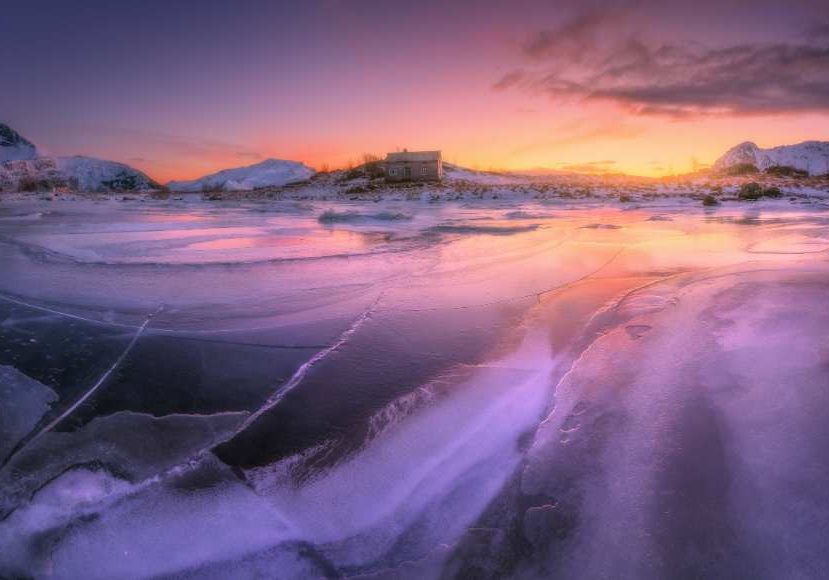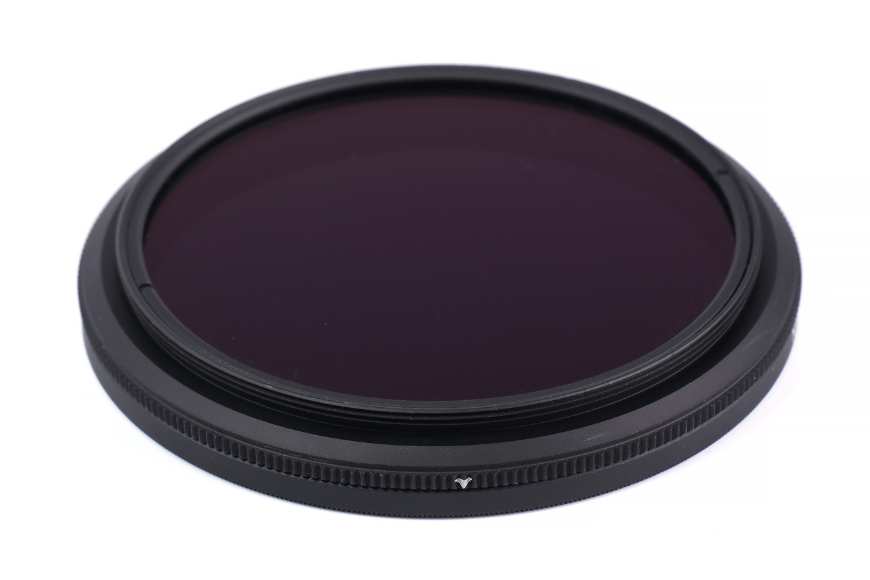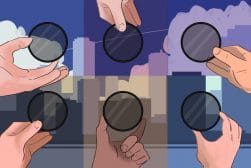
Do You Need an FLD Filter for Your Lens?
Discover whether an FLD filter is a necessary addition to your lens kit, enhancing your photography by correcting fluorescent light color imbalances.
Learn | By Jeff Collier
Do you need an FLD filter for your lens? In this guide, we’ll answer this question and more.
You may have spent your hard-earned cash on an expensive camera lens.
Now, you’re wondering if you should drop more bucks on an FLD filter to protect it.
Don’t worry, we’ve all been there before.
Photographers use camera lens filters for various reasons.
Some use them for protection, while others find them helpful in managing tricky lighting conditions.
But what about FLD filters? They were widely popular in film photography, and still, some photographers use them until today.
Do you really need them in the digital world? Read on to find out!
Table of Contents
What Is an FLD Filter?

Simply put, an FLD, or Fluorescent Light Daylight filter, is a specialized lens filter designed to correct one of the most common issues in photography: light.
The main point behind FLD filters is to help you capture better images under fluorescent lighting conditions. They do that by correcting the color balance of images taken under fluorescent lighting.
But what’s the problem with fluorescent lighting in the first place?
Fluorescent lighting, often prevalent in stores, offices, and many other indoor environments, tends to have a bizarre trait. It gives off a greenish cast in images.
That’s because the color temperature of fluorescent lights is different from what our cameras perceive as “white” light. As a result, you find unwanted greenish hue in your shots.
This is evident in skin tones, as they appear pale and sickly in photos taken under a fluorescent light source.
What Does an FLD Filter Do?
Think of an FLD filter as a translator for your camera. It helps your lens understand and correct the language of fluorescent colors to produce better images when using daylight film under fluorescent lighting.
FLD filters are made from various materials, such as glass, plastic, and metal. They’re also coated with a magenta-colored dye that absorbs specific undesired wavelengths.
They work by blocking the wavelength of blue and green light, which are emitted in excess by fluorescent lights.
This helps compensate for the greenish tint often produced when photographing under fluorescent lights, bringing your photos to a natural color balance.
So, when you capture an image under fluorescent light using an FLD filter, the skin tones have accurate colors. Your white backgrounds won’t have a greenish hue, either.
For years, FLD filters have been extremely popular among film photographers as they do a great job of correcting color balance.
How Much Do You REALLY Know About Photography?! 🤔
Test your photography knowledge with this quick quiz!
See how much you really know about photography...

Do I Need an FLD Filter for My Camera Lens?

Back in the day, film photographers used roll films to capture their images. The problem with roll films is that they are usually daylight-balanced.
So, guess what happens when you capture photos under fluorescent light? Yes, you end up with a weird color cast.
That’s why FLD filters were too popular because they compensated for the greenish color cast that ruined images taken under fluorescent light.
If you use a film camera, then using an FLD filter is a must to take color-accurate photos under fluorescent light.
In today’s digital age, most of us use digital cameras like DSLR/Mirrorless cameras.
Thanks to advances in technology, most of these cameras have an accurate white balance system that adjusts the colors when capturing photos under fluorescent lights.
This system compensates for FLD filters and even produces better results. Even if you try to force your camera to shoot in daylight balance and add an FLD filter, you won’t get the proper cast.
In most cases, you won’t need an FLD filter as long as you’re using a digital camera with a decent white balance system. But why do some photographers still use FLD lens filters?
When to Use FLD Filters

Though FLD filters aren’t necessary for digital cameras, you can use them to add a special effect to your photos. At the end of the day, who wouldn’t like spending less time editing and adding effects to their photos?
Some digital cameras have problems with old or non-standard fluorescent lights.
For some reason, sometimes the white balance system fails to eliminate the greenish hue of the fluorescent light, leading to inaccurate colors.
In that case, using an FLD filter comes in handy to correct the color cast and produce more natural-looking skin tones.
Some photographers also use FLD filters in black-and-white photography as an interesting way to add contrast to their photos.
Another scenario where FLD filters can be beneficial is when taking pictures of sunrise and sunset scenes.
FLD lens filters can help you introduce a pinkish tone to make these scenes more dramatic. It’s like a natural effect without the need to further process and edit the photos on your computer.
To cut a long story short, if you’re a casual or hobbyist photographer, you most likely won’t benefit from an FLD filter. Your digital camera will handle the color adjustment task using the white balance system.
However, if you’re a photography fanatic and doing landscape and architectural photography, an FLD lens filter might be worth the splurge.
While FLD filters are usually not necessary, that doesn’t mean you don’t need to invest in a camera filter.
There are other types of lens filters that can produce dramatic improvements in your photography.
Other Types of Camera Lens Filters

Lens filters are widely used in photography for several reasons. The most obvious reason is protection. Protective lenses can help keep out the dust, absorb impacts, and make the cleaning process much easier.
In other scenarios, lens filters can be a valuable addition to your photography arsenal. They can help you control the colors of certain scenes, create special effects, and reduce reflections.
As you know, it’s always better to catch the best image you can in-camera rather than relying on editing and post-processing to enhance the quality of your images.
That’s when lens filters can give you an edge. They can significantly cut down the time you spend editing images on your computer to achieve your desired results.
Now, let’s take a closer look at the different types of lens filters and their purposes.
1. Clear Filters
Ever heard about clear or protective filters?
Take the HARD Photography Quiz! 🤯
Now it's time to really test your photography knowledge!
(99% of people can't get all the questions right...)

They’re basically shields that protect your lens against impacts and dust and make cleaning a lot easier. They’re made out of glass—and no, they shouldn’t alter your shots by any means.
Many photographers swear by clear filters, and they always keep a clear filter on if they’re not using another filter. However, skeptics argue that clear filters might not offer any additional protection than the average DSLR lens.
Some photographers even claim that clear filters can dent your image quality. Well, that’s only true if you’re using a shoddy filter.
The secret is to pick a clear filter made from durable, high-quality material and has a multi-resistant coating. These high-end filters will keep your lens clean and intact and won’t interfere with your image quality.
2. ND Filters (Neutral Density Filters)
ND filters are widely used in landscape photography thanks to their ability to reduce the amount of light (exposure) reaching your camera sensor without altering color or contrast. What’s the point, you wonder?
This is beneficial when you want to use slower shutter speed or wider apertures in bright conditions. If you’re not using an ND filter, you’ll notice overexposure in your shots.
For instance, if you’re taking pictures of a river or a waterfall on a bright day, you’ll most likely need to capture some motion blur on the water.
If it’s too bright, you’ll end up with an overexposed image, even if you change your camera settings. In such cases, an ND filter will be a game-changer.
3. UV Filters
UV filters have been widely utilized in film photography for years. That’s because they block the ultraviolet light that forms a bluish cast in film photography.
But do we still need that kind of filter for modern cameras?
There’s an ongoing debate among photographers about the significance of UV filters.
Some say they’re not useful as digital cameras can remove UV haze on their own, while others believe UV filters are crucial to maintaining adequate colors.
I’d say that UV filters are irreplaceable only in some situations. For example, let’s say you’re shooting at a high elevation and near a large reflective surface such as a lake.
If you’re trying to shoot a far object in that scenario, the UV light will definitely create a haze in your image, and your digital camera won’t be able to remove it.
That’s when a UV filter is a must-have, as it will easily remove any haze.
4. Polarizing Filters

Polarizing filters, often called polarizers or circular polarizing filters (CPL), can be a wonderful addition to your photography gear.
The best polarizing filters act like magic sunglasses to your camera, allowing light to enter your lens from a certain direction to minimize glare and reflections from reflective surfaces.
If you want to experience the most noticeable effects of polarizing filters, try them in scenes with a lot of reflected light. That includes shooting the sky, glass buildings, bodies of water, or through windows.
Just rotate your polarizing filter a bit, and you’ll notice how it changes the direction of polarized light that’s allowed through your lens. Your images will be much more vivid and vibrant.

Check out these 8 essential tools to help you succeed as a professional photographer.
Includes limited-time discounts.













